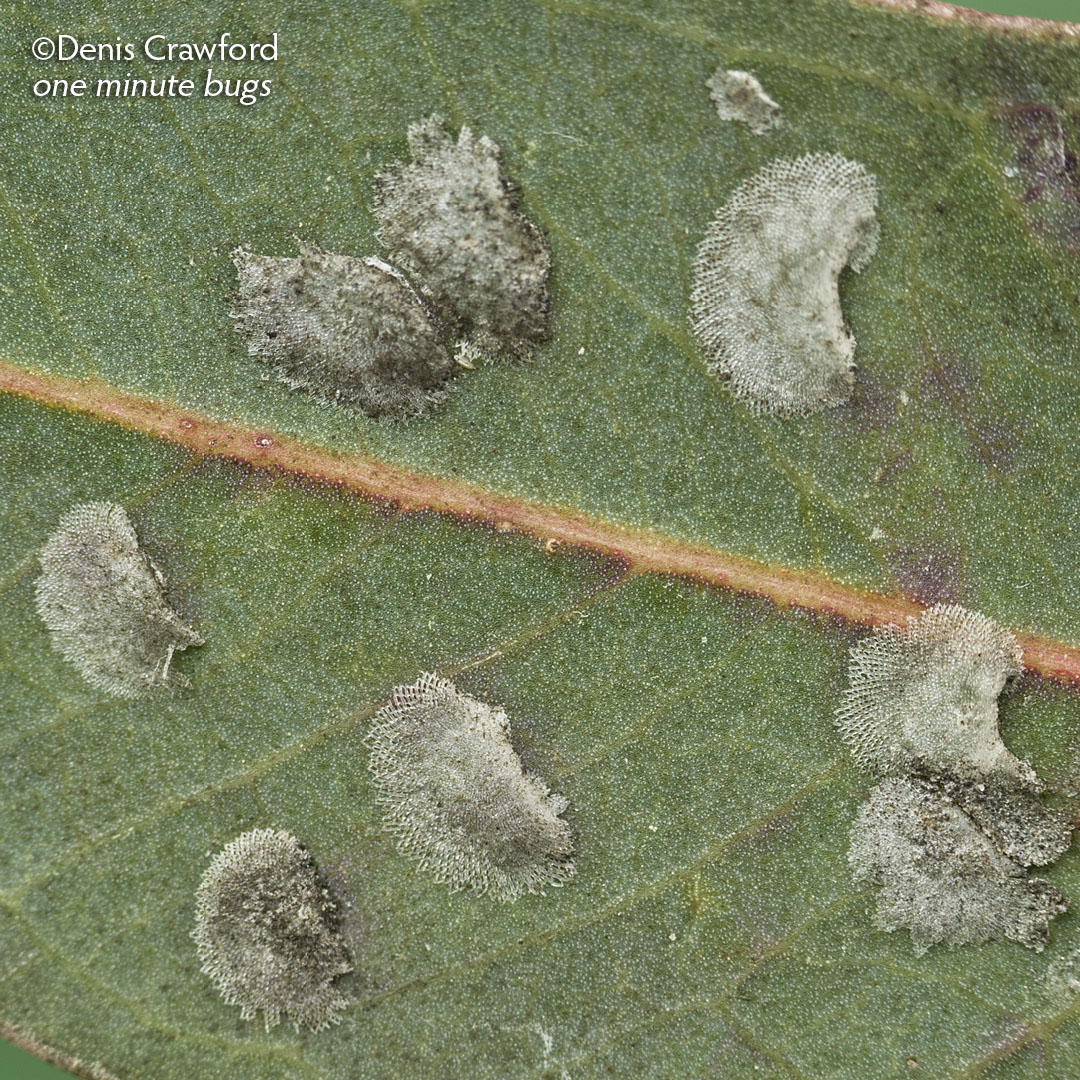In 2017 the roadside trees in the village of Pomonal in western Victoria were infested with insects known as white lace lerps. Did the trees survive?
The trees in question are River Red Gums (Eucalyptus camaldulensis) and when I examined their leaves I could see they were covered with lerps. A ‘lerp’ is the sugary, waxy covering of the immature stages of some species of psyllids (Psyllidae). The insect weaves the lerp from its own liquid excretions as protection from desiccation and/or predation (it is uncertain whether it is one or the other or both). A description of the lerp is used as the common name for these insects, because the lerp created is unique in shape, colour and structure for each species of psyllid. I have posted about lerps and psyllids previously here.
I identified the lerps on the red gums as white lace lerps (Cardiaspina albitextura), a well known insect of River Red Gums (see below). Other eucalypt species nearby, such as Yellow Box (Eucalyptus melliodora), were completely unaffected because they are attacked by different species of lerp insects such as Yellow Box Lace Lerp (Cardiaspina tenuitela). This specificity of white lace lerps to Red Gums was confirmed to me by a ranger at the nearby Grampians National Park. He has only ever noticed significant impact on Red Gums.

In the ranger’s experience the impact is short lived and the trees usually bounce back with a new flush of growth. He assumed the insect population would crash when the leaves died and dropped off. I confirmed that the insect population had indeed crashed – I could find no live psyllids under any lerps I examined. We were expecting the mature trees along the roadside to recover over time as long as the psyllids didn’t return.

We were right. As you can see, despite being severely damaged, the trees have recovered. Whether it was the work of predators or parasites, or natural fluctuations in psyllid populations, is unknown.
The take home message is: just because an insect is on a plant doesn’t make it a pest. Less than 1% of insects are actually pests – in the vast majority of cases insects on plants don’t need to be controlled.

